History guides us all. Every place we set foot flickers with glimpses of the past. Each step one takes on Kalamazoo College’s campus is matched by hundreds, if not thousands of others throughout the college’s history, following unique pathways towards their future successes. Over time, dorm halls were knocked down and replaced, buildings evolved in their usages, and the terrain was shaped as innovation grew in a society of developing trends and academic needs. However, when comparing the history of iconic and everyday places around campus, even in admiration is it evident that modern tastes and circumstances have subdued the vibrant character of the spaces, which have lost the sense of charm that defined previous eras.
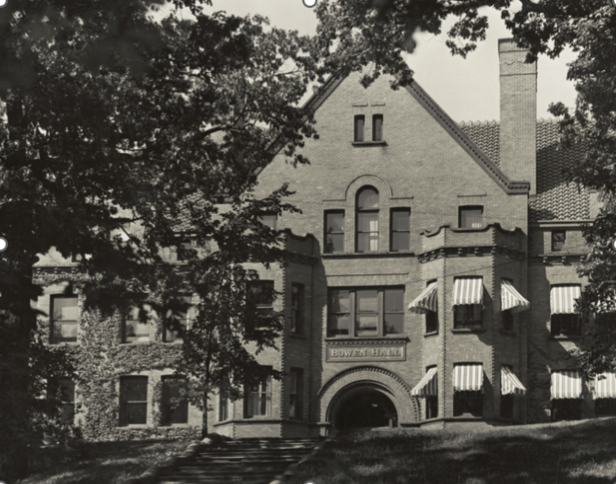
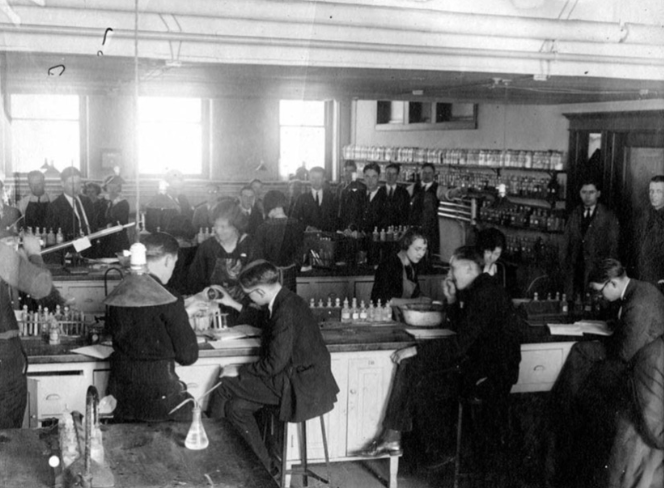

Almost 48 years before Hicks was established in 1970, the central landmark Bowen Hall existed as the core class building. Before it was knocked down to make way for the new Hicks Student Center, a myriad of events and courses took place within its walls. It contained everything from first floor lecture rooms and chemistry labs to a third-floor gymnasium sustaining campus life since 1902. Even after Bowen Hall’s demolition, the Hicks Center still stands as the center of campus life.


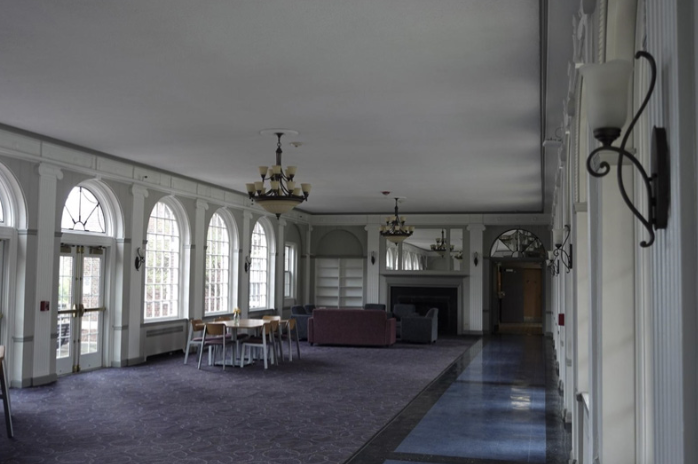
The dorm buildings have changed rapidly over the school’s lifespan, with dorms switched from single-gender to co-ed, and entire buildings demolished and relocated as student enrollment increased. Redecoration to suit the changing eras occurred intensely in every residence hall, characterized based on the tastes of each era, crafting widely different feelings of the spaces each year.
Examining the current interiors of the communal spaces in any of the dorms, one draws the same conclusions: something is missing.
Take Hoben. It has evolved from a men’s only dorm, which hosted annual formals behind its glass arches, to a co-ed dorm. When we examine this current photo, the space seems to be void of character and life. There is no defining sense of charm to give the room substance. Even with the current economic prosperity and technologies available, there seems to have been a loss of refinement, the effortless elegance that once defined each hall. It is essentially calling for its inhabitants to fill the void. The barren nature of Hoben specifically may be due in part to the dwindling of social life with the influx of the internet, and even more so because of COVID-19, which fostered little interest in the general communal spaces from incoming students. There is not much enthusiasm towards making these communal spaces as unique as they once were.
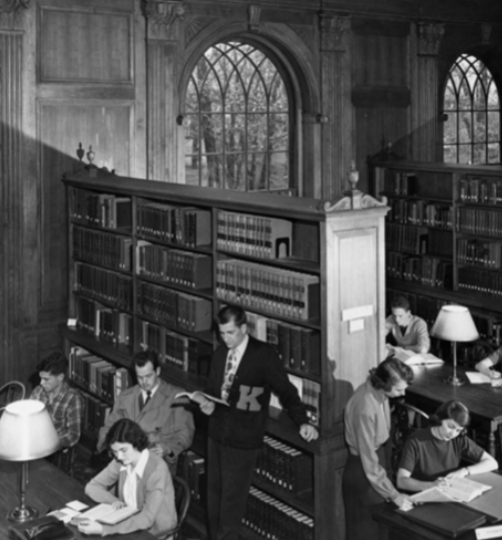
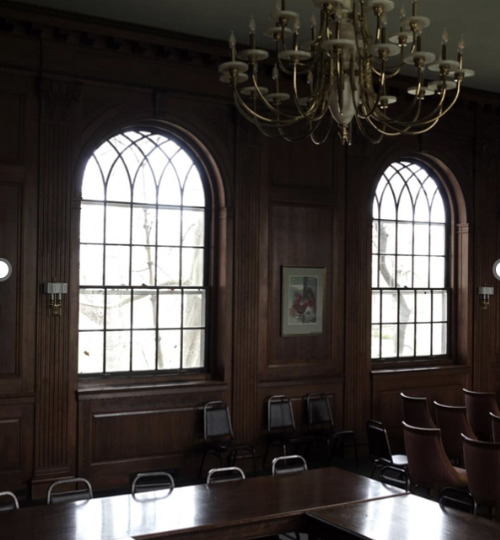
Mandelle originally housed all the books on campus, acting as the literary outlet for all students studying for their classes or exploring new ideas. In 1967, much of the student body and faculty aided in transferring all books out of Mandelle to the newly built Upjohn Library. Mandelle was then converted into business administration offices, but still holds the memories of the silent shuffling of saddle shoes or the still air as students pondered in either admiration or desperation over the bound books lining the shelves. The addition of chandeliers after the big move helped transform the space into more of a meeting and lecture hall rather than a space for the books it used to house.

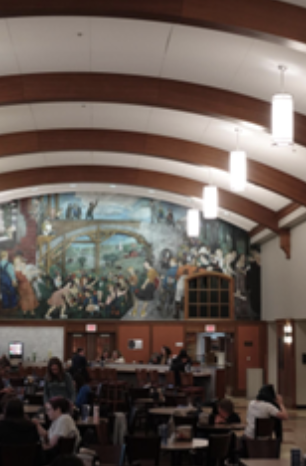
The Welles Dining Hall has changed tremendously since this photo from the late 1950s. Wooden detailing graces the sloped ceiling, and the entire right side of the wall was knocked down to create an open traffic flow from the food to the tables. The mural still stands in vibrant technicolor, an evocation of the everlasting spirit of the school’s past. Besides the evident fashion switches reflecting the changing preferences of the younger generations, much of the form and function has remained identical. With its attachment to Hicks after Bowen was demolished, it became a true epicenter for conversation and much-needed repository for food.
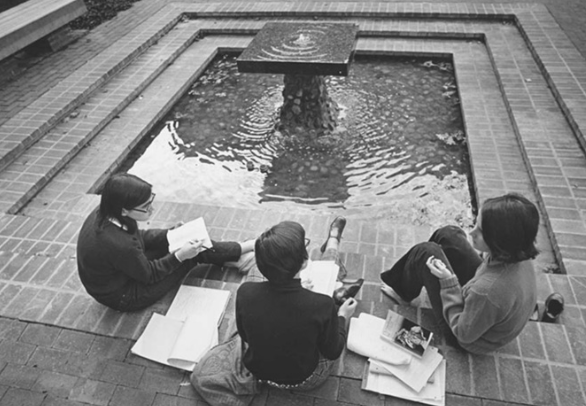
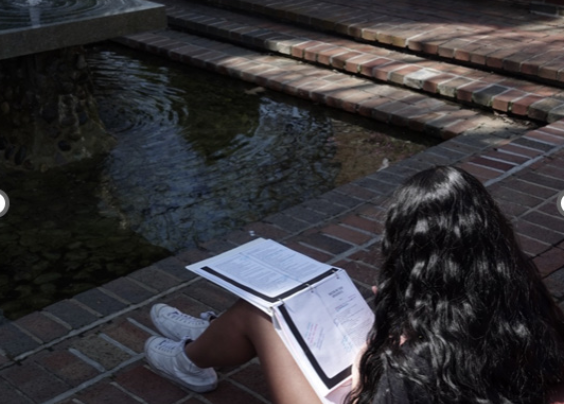
Red Square, a gem situated snugly beneath beautiful greenery and Mandelle, always holds an air of ease and tranquility. In the warmer months, students meet to converse near its steadily streaming fountain, doing homework and lounging to ease the blistering heat. A refuge for every generation, this spot has withstood development and sustained its charm, identifiable by the touch of red brick that defines Kalamazoo College’s statement streets. Red Square remains a timeless spot even as the world continues its incessant development.
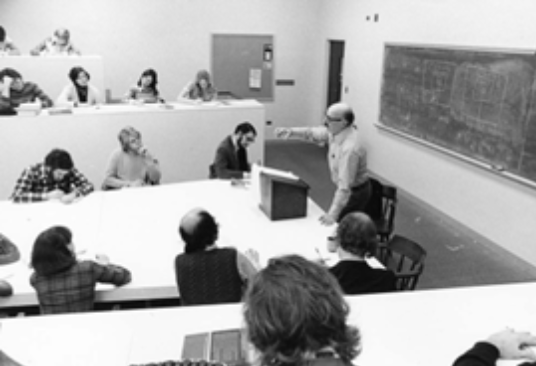

Classrooms and lecture halls across all academic buildings have stayed mostly the same, with the introduction of modern technologies shaping each newer room’s layout and furniture designs. Swapping chalkboards for whiteboards and wooden chairs for the modern swivel, the rooms have been molded to fit these newer advancements.
This classroom from a 1970’s photo in Dewing Hall depicts Dr. Herb Bogart teaching a class, with the students seated at tiered desks overlooking the rest of the room. Following this desk style, many classrooms in Olds Upton and Dewing include this tiered effect to utilize the efficiency of the heightened vantage point.
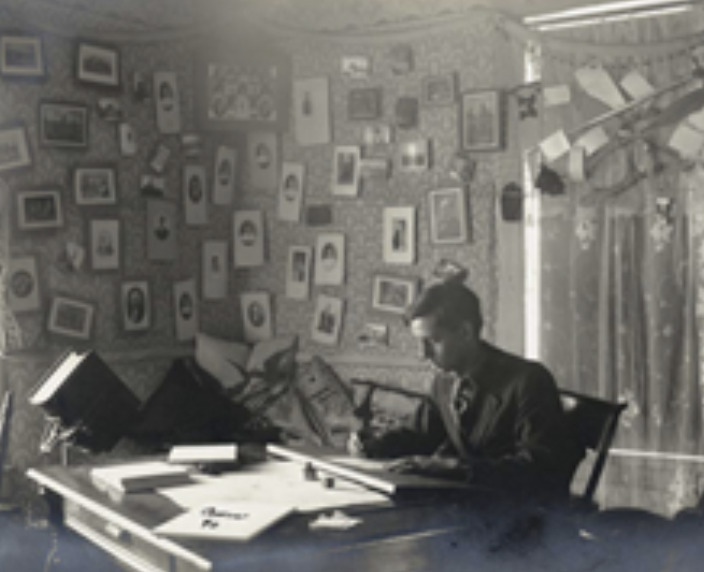
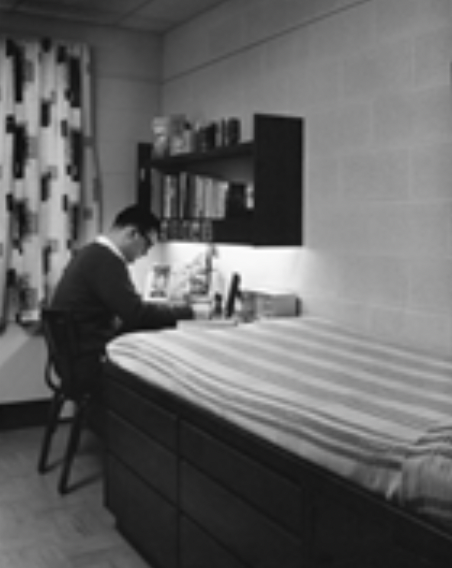
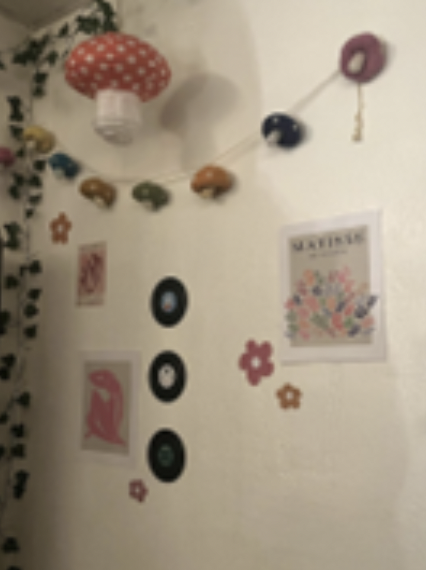
The college dorm room has become infamously associated with independence and personal expression. It has always been a literal representation of any college student’s soul, an outpouring of their deepest goals and desires. When adapting to college life, it gives one a place where they can unwind surrounded by what brings them peace. The dorm room decoration style has evolved in a bell shape: we see the photographs hung eclectically on the walls in the first photo taken after the school was established in the early 1800s, which looks a lot similar to the poster and polaroid-clad walls of the current times. In between, there were a lot less wall decorations with more simplistic furniture to provide the sense of neatness and order that dominated societal expectations of the late 1950s-60s era. We have adopted that older sense of expression: maximalism with a modern freedom. Are you a maximalist or a minimalist? See which time period you’d fit right in with through the images above!
As much fun as it is to admire and reflect on old photographs, one can’t help but wonder where the decadent furniture went within Kalamazoo College’s living spaces when the rest of the public buildings have been refurbished to precision. The exterior of the buildings has remained the same for a majority of the campus, but the interiors reflect ghosts of the charm that used to reside within their walls. The students give campus life, making it what it truly is to each new generation of learners. Without those elements of character, campus will become a ghost town, laden with echoes of the past, wandering hopelessly wondering what happened to the footsteps that were left behind whilst we were.

Leave a Reply